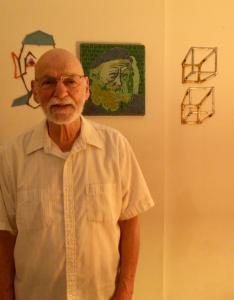Jerome "Nick" Heffter

NOAA Heritage Oral History Project
NOAA Heritage Oral History Project aims to document the history and legacy of NOAA through compelling interviews with its leaders. These firsthand accounts provide an invaluable resource that preserves NOAA's significant contributions to environmental research and management, fostering a deeper understanding of NOAA's vital role in shaping our understanding of the Earth's oceans and atmosphere.
Molly Graham
Dr. Jerome "Nick" Heffter served as a research meteorologist at OAR's Air Resources Lab. He was a pioneer in modeling the dispersion of nuclear radiation and other atmospheric pollutants during the Cold War. Nick tracked the release of nuclear radiation from Chernobyl in 1986 and reported it to US leaders before Russia informed the world of what is considered the worst nuclear accident in world history. Currently, Nick is retired from NOAA, but works as a contractor at the Air Resources Lab.
Scope and Content Note
Jerome "Nick" Heffter provides information about his family history. He briefly discusses the Great Depression, Prohibition, and the presence of gangsters in the Twin Cities. Heffter then goes on to talk about his involvement in briefing and debriefing pilots, including renowned aces Robin Olds and Chuck Yeager, and his experience with obtaining a top-secret clearance. Heffter shares his experience with Fortran programming language and the various office locations they worked at over the years. They discuss the transition from machine language to Fortran and the significance of Fortran in scientific programming. He also shares his involvement in nuclear testing and role as a fallout forecaster during the Operation Dominic series in the Pacific. He describes the process of preparing for tests, giving briefings to scientists and military personnel, and the challenges of forecasting fallout accurately, mentioning specific tests, such as the Big Horn, and experiences witnessing the blasts.
Heffter also mentions the Vela project and the Cuban Missile Crisis fallout forecasts. He explains that the Vela project involved investigating a detonation off the coast of South Africa in 1979, which was suspected to be a nuclear test. Regarding the Cuban Missile Crisis, he explains the development of fallout forecasts for potential nuclear attacks on the United States. He then goes on to mention the decline of nuclear-related projects after the end of the Cold War, with the Nevada Test Site taking over and the Plowshare program focusing on non-nuclear methods like fracking. The Air Resources Laboratory collaborated with other agencies such as the Department of Energy (DOE), Atomic Energy Commission (AEC), and Nuclear Regulatory Commission (NRC).
Heffter also discusses the topic of volcanic ash and its impact on aircraft safety. He mentions that Mount St. Helens eruption in 1980 led to the realization that volcanic ash could damage aircraft engines and describes his involvement in developing a program for volcanic ash and aircraft safety. He goes over a model he developed called VAFTAD (Volcanic Ash Forecast Transport and Dispersion) to provide information to pilots and agencies about the movement of volcanic ash. Several volcanic eruptions are mentioned, including Mount Redoubt in Alaska, Spurr in Alaska, Popocatépetl in Mexico City, Pinatubo in the Philippines, and Hudson in Chile. He also mentions the eruption of Mount Kilauea and the Three Mile Island accident. Heffter emphasizes the need for accurate models and the challenges faced by modelers in incorporating chemistry, rainout, and washout mixing.
Please Note: The oral histories in this collection are protected by copyright and have been created for educational, research and personal use as described by the Fair Use Doctrine in the U.S. Copyright law. Please reach out Voices@noaa.gov to let us know how these interviews are being used in your research, project, exhibit, etc. The Voices staff can help provide other useful resources related to your inquiry.
The NOAA mission is to understand and predict changes in climate, weather, oceans, and coasts, to share that knowledge and information with others, and to conserve and manage coastal and marine ecosystems and resources. The Voices Oral History Archives offers public access to a wide range of accounts, including historical materials that are products of their particular times, and may contain offensive language or negative stereotypes.
Voices Oral History Archives does not verify the accuracy of materials submitted to us. The opinions expressed in the interviews are those of the interviewee only. The interviews here have been made available to the public only after the interviewer has confirmed that they have obtained consent.
